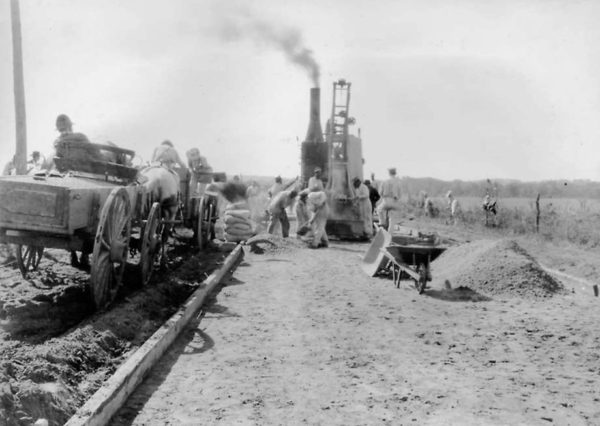
Prisoners from the Anamosa State Penitentiary (then called the Men’s Reformatory) begin building the road near Columbus Junction in 1914. Photo courtesy of Iowa Department of Transportation Library
By John Busbee
Capturing the stories of history can be an interesting and rewarding endeavor. Start with the bare bone facts: dates, locations, names. What makes history come alive and relevant is when someone digs deeper and colors in the black -and-white lines with the stories and human elements, bringing history to vibrant life.
Tom Woodruff is one such catalyst. Woodruff grew up in Louisa County’s Columbus Junction area, always curious about the region’s history. His tenacity, research and buoyant enthusiasm have taken many stories from fading “remember whens” into documented chapters of Louisa County’s history. Such stories are cherished and shared, undoubtedly inspiring new generations of local historians.
Woodruff’s booklet, “Sands of Time,” contains a more detailed account of an event more than a century ago when convicts contributed to a bit of local lore when they built what is known as “Convict Road” in 1914 near Columbus Junction. Woodruff wrote, “…we must remember how important it is for every community to preserve their culture — their own distinct and historic identity.” As with the passage of time, these stories are like sands in a bottomless hourglass and must be captured before they sift through into oblivion.
The convict cement road, sometimes called “convict highway,” is a glimpse into Iowa’s early road-building efforts. It also recognizes how people today, dedicated to preserving such local history captured this story, memorialize it as a cultural destination for others to appreciate.
TO READ THE ENTIRE STORY AND OTHER FASCINATING STORIES ABOUT IOWA HISTORY, subscribe to Iowa History Journal. You can also purchase back issues at the store.
